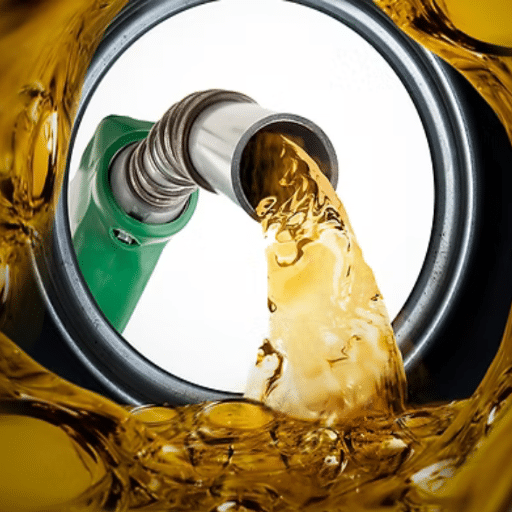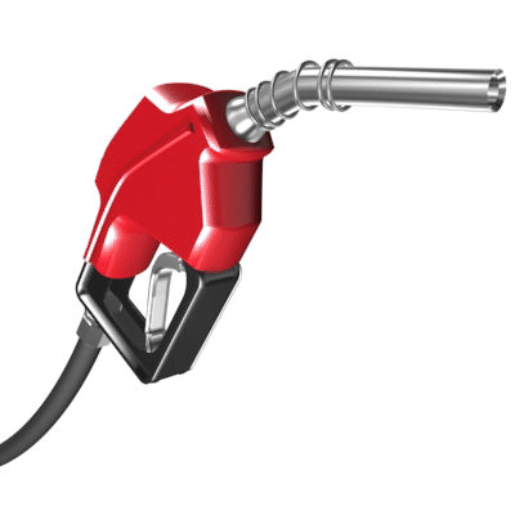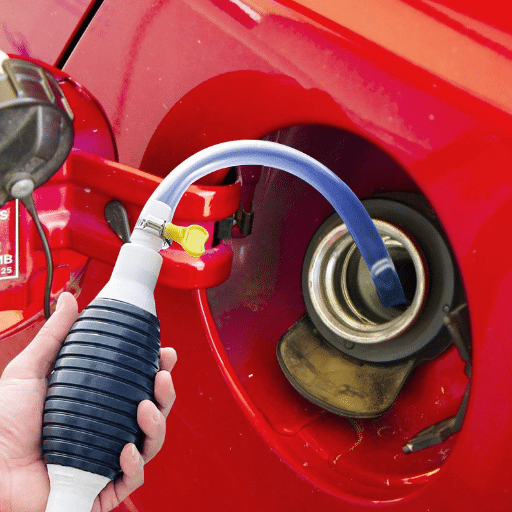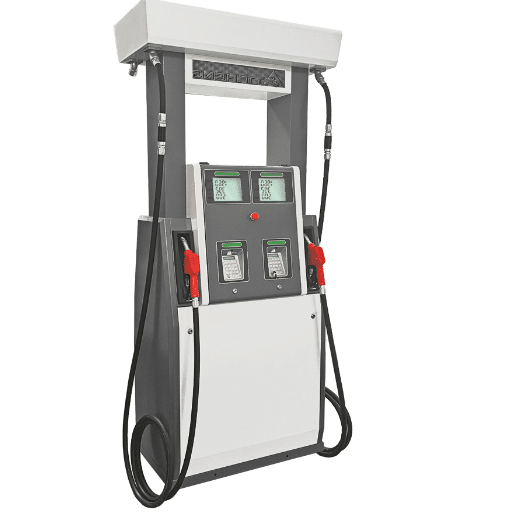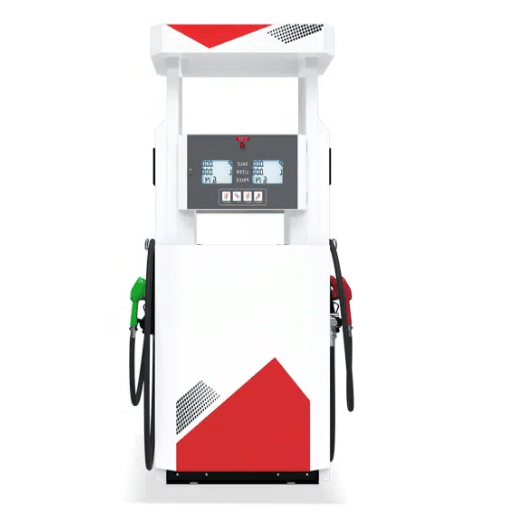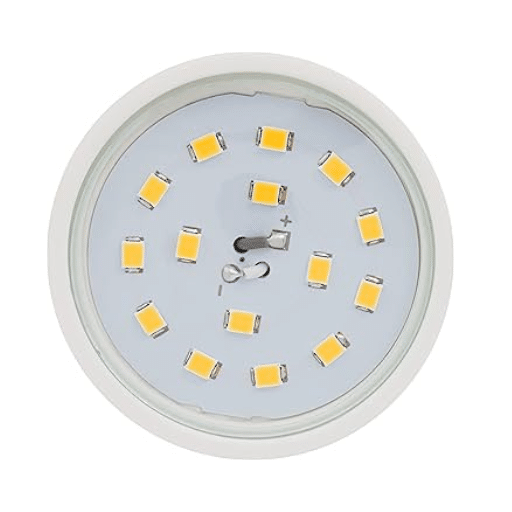Issues with gas nozzles can definitely cause frustration and delay refueling, especially when your vehicle is essential for a day’s work or long-distance commute. Solving the problem efficiently is entirely dependent on knowing what causes the nozzle to shut off early, not pump fuel, or even leak. Having a look at the causes behind gas pump nozzle problems and how to tackle these issues practically will be the focus of this article. You will understand better how gas nozzles work, the problems they face, and how to fix them to speed up your refueling method.
Understanding the Gas Pump Nozzle
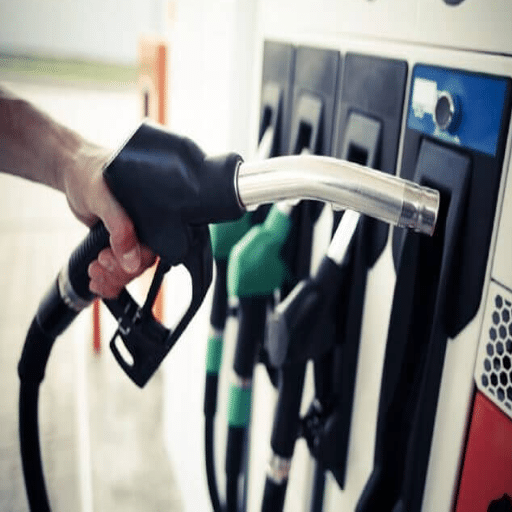
Although the design of the nozzle is simple, it remains effective in regulating fuel flow and preventing overfilling. The auto stop mechanism involves a tiny venturi tube just away from the tip of the nozzle. When fuel flows out past the opening to the vehicle’s tank and blocks the air from the venturi tube, a vacuum is created, and fuel dispensing by the nozzle is stopped. This safety measure ensures accurate refilling and prevents spilling. It is essential that nozzles be regularly maintained, checked for damage, or debris to ensure that they function as they should and to avoid any malfunction with the auto stop.
How Gas Pump Nozzles Work
Gas pump nozzles operate through a simple yet ingenious mechanism involving fluid dynamics and mechanical concepts. The main system feature is an automatic shut-off valve to prevent overfilling. This mechanism uses the venturi effect created by a tiny air passage in the nozzle. When fuel liquid rises in the tank and blocks the airflow towards the venturi tube, a pressure alteration will occur. Immediately, this pressure difference causes the diaphragm to stop the flow of fuel. This process is very precise, allowing for the safe and efficient refueling of automobiles.
Another critical component is the check valve mounted above the automatic shut-off system to regulate fuel flow by holding pressure upstream. A spring-loaded trigger controls fuel flow rates, enabling users to adjust dispensing speeds. Safety features such as thermal relief valves provide stability during pressure or temperature changes that may happen within the pump system.
Gas pump nozzles have to be made out of robust materials, engineered carefully, and built according to stringent industry standards to withstand high-pressure fuel delivery. Regular checks, calibrations, and cleaning of the nozzles should be implemented, ensuring efficiency and safety while cutting down on incidents of leaking or incorrect dispensing.
Components of a Gas Nozzle
A gas nozzle features a number of parts designed to ensure precision, durability, and safety in fuel dispensing operations.
- Spout: The spout is a long tube delivering the fuel into the car’s tank. The disposal of fuel has to be done on an anti-spillage basis in modern systems, as per vapor recovery regulations.
- Flow Control Lever: This lever allows for manual adjustment of the rate of fuel flow. The lever is operated in conjunction with the automatic shut-off system to prevent spills during refueling.
- Automatic Shut-Off Mechanism: It is a very important safety function activated by a vacuum actuator. It permanently stops fuel flow into the vehicle when the fuel tank is almost full by sensing a backup of fuel in the nozzle spout.
- Vapor Recovery System: The nozzle has a vapor recovery facility in many cases, which will catch any fuel vapors emitted during refueling, thereby reducing pollution and conforming to environmental regulations.
- Swivel Joint: As the name suggests, it allows the hose to swivel freely and thereby minimizes wear and tear of the hose, granting user comfort during dispensation.
- Seals and O-Rings: Being in areas critical to leakage, these ensure leakage-prohibiting operation even at high pressures.
Gas nozzles are diligently put through such components to comply with safety, environmental, and efficiency norms; hence, they remain indispensable in a system of fuel delivery.
Types of Gas Pump Nozzles
Gas pump nozzles are classified under the operational mechanism, construction, and usage. Below are the main types of gas pump nozzles:
| Nozzle Type | Description | Key Features |
|---|---|---|
| Automatic Shut-Off Nozzle | Automatic shutdown happens in these nozzles when the tank gets full. A venturi-based detector senses when the fuel backs up into the nozzle spout, ensuring a spill-free action. | Safety mechanism, spill prevention, venturi-based detection |
| Vapor Recovery Nozzle | They capture fuel vapors emitted from filling in order to comply with environmental laws and redirect these vapors back into the storage system to limit air pollution. | Environmental compliance, vapor capture, emission reduction |
| Manual Nozzle | Manual nozzles convey control to the operator, where engagement and disengagement of fuel flow are performed manually. These nozzles are usually found where lower fuel flow rates are present or in older systems lacking an automatic shut-off. | Operator control, manual operation, lower flow rates |
All those types of gas pump nozzles are purposely designed for specific safety, efficiency, and regulatory considerations; the choice depends on operational needs and environmental considerations.
Common Issues with Gas Nozzles
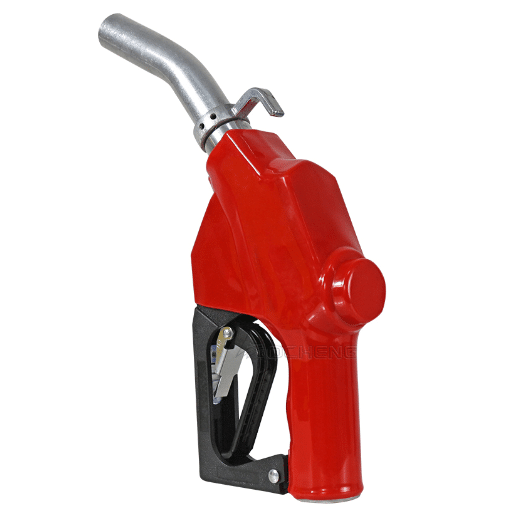
- Fuel Leaks: Over time, wear and tear affecting seals or connectors can make fuel leaky, presenting safety and environmental issues-taking immediate precedence.
- Clogging: The accumulation of dirt or sediment within the nozzle obstructs fuel flow, leading to intermittent operation and a slower rate of dispensing.
- Malfunctioning Automatic Shut-Off: Should the automatic shut-off fail, it can lead to overfilling; spills and resultant hazards may ensue.
- Damage to the Spout: May bend or crack the spout, undermining its function and perhaps inaccurate fuel delivery.
- Trigger Issues: Trigger mechanism problems may cause the process to have a stop-and-go feel-energy pumping fuel should be smooth and controlled.
Regular maintenance and inspections are the best way of spotting and addressing these concerns on time, and provide for the safety, efficiency, and compliance requirements of fueling operations.
Fuel Flow Problems
Fuel delivery problems may present themselves on many occasions and occur for mechanical reasons or as a consequence of some environmental or operational issues. Some common causes and their remedies are discussed below:
Blocked Fuel Filter, Strainer, or Nozzle Openings
The fuel filter or strainer, or even the nozzle openings, may have been blocked by dirt, or other debris, including small particles of residue or sediment, restricting the flow of fuel. Never neglect to check the condition of the filters and replace them if necessary, in accordance with the manufacturer’s recommendations, to avoid blockage and ensure smooth fuel flow.
Air Locks in Fuel System
Air injected into the fuel line, causing inconsistent fuel delivery, must be removed by bleeding the fuel system to expel any air pockets so that flow may be reinstated. Always work according to the agreed procedure established for the equipment.
Low Tank Pressure
Poor venting or vapor lock situations create illogical pressure differences that could diminish fuel flow. The tank vent must be checked to be free from any obstruction and in full working order, ensuring good airflow so that no pressurized build-up can occur.
Damaged or Worn Fuel Pumps
The failing fuel pump may have trouble maintaining steady flow rates or pressure. Worn-out pumps should be replaced while keeping a maintenance schedule for routine service, ensuring reliable operation and good conditioning.
Temperature-Related Viscosity Problems
Extreme temperatures may change the viscosity of the fuel, mostly in cold temperature conditions, causing slow flow or blockage. Use fuel additives for cold-weather operation and store the fuel in a temperature-controlled setup, if possible.
Dealing with the above common concerns through systematic maintenance, periodic inspections, and proper use of equipment will greatly alleviate the problems of blockage in fuel flow, thereby ensuring smooth and safer working conditions while refueling.
Automatic Shutoff Failures
Automatic shutoff failures are typically caused by blocked systems, faulty sensors, or damaged components in the fueling system. A classic example would be the vent tube becoming blocked with debris, which prevents the air from being displaced, thus causing the nozzle to shut off prematurely. Similarly, defective shutoff sensors, usually worn or dirty, can cause inconsistent functioning or failure of the system. Regular inspection and cleaning of components like the vent tube or nozzle assembly will counter these problems. Replacing worn or damaged components as soon as possible keeps the system working within tolerable parameters and firmly within operational safety standards. Following the manufacturer’s instructions and having an adequate maintenance program will go a long way toward ensuring the long-term reliability of automatic shutoff mechanisms.
Blockages and Obstructions
Blockages and obstructions in automatic shutoff mechanisms are formed by debris, dirt, or residue being deposited in the finer workings of the vent tube, nozzle, or valve system. Such obstructions halt air and fluid flow, hence resulting in erratic performance or total system failure. To deal with this problem, experts recommend regular inspection and cleaning at regular intervals by methods and tools approved by the manufacturers. Compressed air, soft brushes, or proprietary cleaning agents can be used to dislodge the buildup and not damaging the delicate components.
Prevention, rather than cure, is a better way to reduce incidences of blockages. Filtered fluids or exposure protection of the system from excessive particulate contaminants will help improve the life expectancy of the mechanism. Furthermore, operator training should include learning to detect early warning signs of partial blockages, like slower responses or unusual noises. This precedes any preventive maintenance intervention to prevent the point of impaired operation.
Troubleshooting Your Gas Nozzle
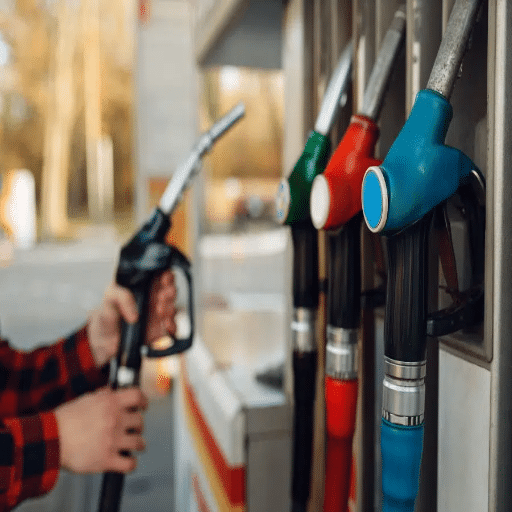
Flow Restriction
Cause: Partly blocked nozzle or fuel line due to debris or particulate buildup.
Solution: Check and clean the nozzle and associated components. Obstructions should be blown out with compressed air, and ensure no contaminants exist in the fuel line.
Premature Nozzle Shut-Off
Cause: Faulty automatic shut-off mechanism or high back pressure in the system.
Solution: Test shut-off sensor function and investigate vent line blockages. Replace faulty parts if deemed necessary.
Fuel is Leaking Near the Nozzle
Cause: Faulty seals and gaskets, or the nozzle might have been forced into an installation.
Solution: Check the seals and gaskets for wear or cracks and replace any damaged parts. Also, ensure the nozzle is properly fitted to the fuel dispenser.
The Nozzle Does Not Dispense Fuel
Cause: Clogged fuel paths or malfunction of internal nozzle components.
Solution: Take apart the nozzle to inspect it for internal damage. Having located the affected parts, clean or replace them to restore functionality.
Addressing these common problems in a systematic way enables operators to address nozzle issues efficiently and keep the fuel dispensing system operating.
Identifying the Problem
Observation
Inspect the nozzle first visually, looking for general external damage like cracks, leaks, or blockages. Make sure it is fastened properly to the dispenser and check any signs of wear and tear on the major parts, particularly on the seals and gaskets.
Functional Testing
It is sometimes desirable to check the operation of the nozzle, within normal parameters, for factors not to occur, such as fuel irregularities in flow, shutting off for no reason, or just refusing to dispense fuel. Consider pressure levels inside and any internal clues that can be given by sound.
Component Assessment
Take the nozzle apart and examine all internal components like the poppet valve, diaphragm, and spout spring for potential clogs, dirt accumulation, or broken parts that could impair the operation. Usually, cleaning or changing the defective parts will solve the problem.
Reference to Diagnostic Materials
Use the associated manuals given by the nozzle manufacturer or the industry standard documents. They usually contain flow charts and detailed specifications to help in the search for very specific failure points.
Make Good Use of Digital Tools
Where available, use diagnostic equipment or software tools to check fuel pressure, flow rate, and other vital parameters. These tools will generate precise data, whereby the origin of the malfunction can be isolated.
Implementing the above steps in a logical sequence will enable operators to quickly identify the problem at hand, ensuring minimum downtime and the highest level of performance from the dispensing equipment.
Steps to Fix Common Issues
| Step | Action Required | Industry Insights |
|---|---|---|
| Check for Visible Damage | A direct visual inspection for physical damage or wear must commence. Cracks, loose fittings, or corroded metal in components such as hoses, seals, or valves are frequent signs of potential failure. | Industry reports suggest that almost 40% of dispensing system mechanical failures result from wear and tear of visible parts. |
| Verify Power Supply and Connections | The power supply must be checked to confirm whether it is working, and also, all connections must be checked for security and correctness. Use a multimeter to check the voltage level. | Interruptions in power supplies and disrupted connections have been identified as causes of system inoperability in more than 30% of equipment diagnosis cases. |
| Flow Regulation Check | Check that all possible fluid flows, including such flows in pipelines and streams into pumps, are localized without any blockage or constraint. Hanging-up scenario occurs with any debris blockage, all air locks, or malfunctioning components. | Research shows that for systems with less operating flow, performance may drop by up to 25%, directly affecting efficiency. |
| Calibrate Pressure Levels | Using calibrated pressure gauges, set the system pressure to those values provided by the manufacturer’s best specifications. Any changes in pressure could be a direct indicator of failure of the pump, leakage in the system, or faults in the regulator. Consequently, all detected anomalies must be investigated and subsequently rectified immediately to avoid extended system downtime. | Proper pressure calibration is critical for system safety and efficiency. |
| Analyze Software Diagnostics (if applicable) | For modern amenities having diagnostic software installed, the user needs to download the latest firmware, and compatibility needs to be checked so as to ensure proper readings. The system logs are to be analyzed for any error codes or inconsistent patterns. | Data declare that software-based diagnostics help reduce troubleshooting time by 50% and thus increase maintenance precision. |
| Perform Preventive Maintenance Checks | Check the subordinate parts such as gaskets, filters, and sensors for wear or clogging. Consumable parts can be replaced on a periodic basis according to equipment manuals. | This way, operational life could be extended by roughly 20% and sudden breakdowns could also be reduced. |
Applying such a systematic approach to solving these common issues through accurate measurements and on-time maintenance can greatly increase the reliability of and life expectancy for dispensing equipment.
When to Seek Professional Help
After Troubleshooting
When preventive fixes are not carried out by the technical staff following the troubleshooting methods mentioned in the equipment manual, professional help must be sought. Symptoms as serious as perceptible calibration errors characterizing periodic malfunctioning of sensors, if ever big spills occur or rust leaks from the system, or electrical power issues, do indicate the unspeakable systemic fault needing expert consideration. Whenever the need for specialized diagnostic equipment arises or special skills are required beyond the operator’s knowledge, the authorized technician or original manufacturer must be contacted. Professional services engaging major overhauls or scheduled inspections in advance could also save on delays and incur great costs, thus meeting standards of industry.
During Maintenance Issues
If problems arise with your nozzle’s operation and the standard maintenance does not rectify it, surely seek professional help with constant clogging, uneven spray, or even visible damage. If any suspected internal wear and tear reduces system efficiency, an expert must assess the situation and provide an appropriate repair. Recalibration or maintenance of the operating system to meet certain industry standards, therefore, makes professional services necessary to meet safety requirements and optimum performance.
Preventive Measures for Gas Nozzle Maintenance
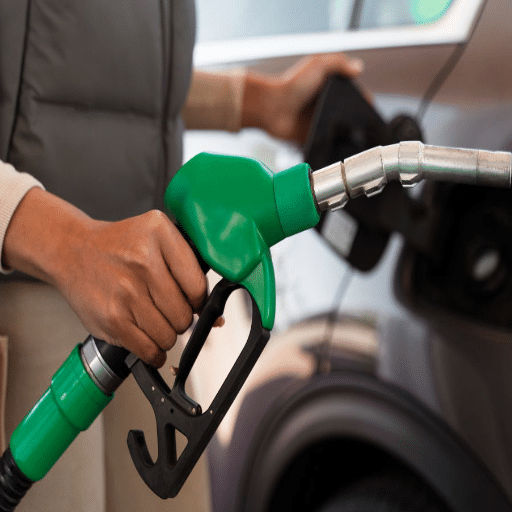
Please observe the following to ensure the performance and longevity of the gas nozzles.
- Cleaning the Nozzle on a Scheduled Basis: To avoid any obstruction of gas flow because of dirt, debris, or residue, the nozzle should be cleaned periodically. Suitable cleaning agents, as may have been recommended by the manufacturer, should be used.
- Inspect for Wear and Damage: Regularly conduct visual inspections to look for any cracking, deformation, or wear that may affect the functional state. Damaged parts should be replaced forthwith.
- Observe the Usage Conditions: Ensure that the nozzle is used within the pressure and temperature range set down by the manufacturer; otherwise, premature deterioration will be inevitable.
- Lubricate Moving Parts: Wherever applicable, use the recommended lubricant so that there is no excessive friction, allowing the movable parts of the adjustable nozzle to operate smoothly.
- Follow Manufacturer Instructions: Maintain performance and safety by strictly following maintenance instructions provided by the manufacturer.
If strictly followed, these measures will accomplish the triple goals of reducing downtime, enhancing safety, and prolonging the life of gas nozzles.
Regular Inspection and Cleaning
The cleaning schedule, including inspection, should be followed by the gas nozzle in order to maintain safe working conditions and prevent destruction. Initial inspection consists of observing worn parts, cracks, or damage to external components, such as seals and connectors, that could affect safety or create gas leaks. Also, watch out for clogging inside the nozzle. Materials may clog the passage, hence restricting gas flow and reducing formation. If there is anything that needs to be cleaned from inside or outside, use only those cleaners that are recommended and approved by the nozzle manufacturer. These should be cleansers that are non-abrasive and safe for internal components.
While still undergoing testing, it is very important to validate the safety mechanisms of the nozzle, including shut-off valves, to ensure their safety and sanitation. Ensuring periodic cleaning with thorough inspections not only maintains the efficiency of the nozzle but also reduces hazards from its operation and helps it comply with industry standards. Maintenance actions should always be logged to keep track of how the nozzle performs over time and correct potential problems proactively.
Proper Usage Techniques
Industrial nozzles are the backbone of many industrial applications: they spray or flow liquids and powders for various uses. For their long-lasting functioning, certain best practices should be observed; foremost, one should always pick a nozzle construction and performing type best suited to one’s application specifications, including spray angle, flow rates, and pressure requirement. The installation should be right on the mark; any misalignment will lead to uneven distribution or other inefficiencies in the system. During nozzle operations, inculcate the considerate use of pressure limits and flow rates as described by the manufacturer, so as never to overload the system or create premature wear on surfaces. Follow a regular inspection routine of spray patterns that may show inconsistencies from a previously noted normal pattern, which indicates either clogging or damage, and react to them by cleaning or replacing the nozzle. Equip yourself with only those tools and cleaning solutions the manufacturer recommends; otherwise, chemical damage or abrasion to the nozzle-building material can occur. Besides, train operators circumvent handling errors and use troubleshooting techniques so that any incidence of human error will not affect the system’s performance. Regularly implement those methods to enhance operational efficiency while minimizing downtime.
Tips for Extending the Life of Your Nozzle
- In order to obtain a larger service life out of your nozzle, maintenance procedures must be conducted regularly. Carry out routine inspections for signs of wear, clogging, or misalignments that can degrade the performance and efficiency of the nozzle.
- Clean the nozzle frequently to avoid system blockage and asymmetric spray patterns due to residue build-up, and use only those tools as per the manufacturer’s recommendations.
- Use filtered fluids, as unfiltered ones can contaminate the nozzle and cause erosion or corrosion.
- Do not operate the nozzle in an environment with very low or very high temperatures, as sudden shock and strain can impair it.
- After use, keep the nozzle in a dry and secure storage environment.
Following the above practical considerations will enlarge the service life of your nozzle, thus reducing your expenses and improving the performance of the entire system.
Signs You Need a Replacement
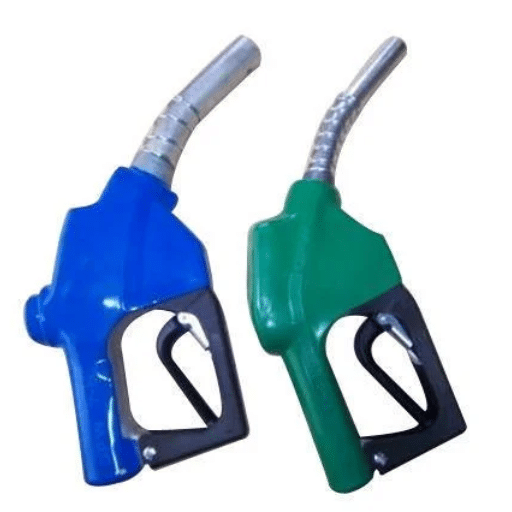
With specific elements that have come into view as very indispensable changes which really call for the substitution of equipment or system, there is the persistent appearance of performance issues which themselves indicate worse equipment problems, especially when the malfunctions have become so frequent or, more simply, when the machinery has become less productive-downtime-many a times more than maintenance is allotted. Rise in operational costs-Highest on Energy Costs and more on Repairs-Repeated Repair charges would be another. The equipment may be unable to meet regulatory requirements currently imposed upon it or obsolete due to recent technological changes; in this situation, it would usually be cheaper to replace it rather than carry out repairs. To an experienced eye, corrosion, structural damage, and illogical noise rang several alarms of their interfering with functionality. Considering these carefully ensures long-term efficiency, safety, and competence for the job.
Finding a Reliable Fuel Service Technician
Whenever I’m seeking a reliable fuel service technician, my big focus is on certification, experience, and reputation. Check the licensing of whichever technician or company before trained or qualified to work on various types of equipment or fuel systems you use. I may also look at their reputation by way of reviews or testimonials of past clients to determine whether they are professional or dependable. From there, I assess the promptness of communication among them, agreement on clear charges, and at last, whether or not they stick to safety standards.
Preventative Maintenance Tips
Preventive maintenance is one term that truly encompasses many meanings, sometimes extending to preventing itself. Proper care increases longevity and efficiency and keeps downtime at bay. These brief practical pointers are given according to authority:
- Frequent Inspections: Carry out regular checks for any signs of wear, leaks, or imperfections. Remaining alert to the first signs of trouble can mean avoiding costly repairs and ensuring that the equipment remains in excellent shape.
- Manufacturer Recommendations: Follow any schedules and procedures for maintenance that are stipulated by the equipment manufacturer. Also, maintain its integrity by using only manufacturer-approved parts and fluids.
- Cleaning and Lubrication: Clean important parts when needed, and provide sufficient lubrication for the moving parts to reduce friction and protect them from corrosion.
- Track Performance Parameters: Track key consultancy parameters like fuel efficiency, temperature, and power output. Any deviation from the normal variation can indicate possible servicing.
- Train the Operators: Install training programs in which operators and technicians are trained regarding work and required maintenance to prevent any misuse or neglect.
When all actors operate toward this intent, potential failures are reduced, together with security and compliance issues pertaining to industry standards.
Reference Sources
Critical designing and flow analysis of various nozzles using CFD analysis
Recent advances in titanium alloy powder production by ceramic-free inert gas atomization
Cutting techniques for facilities dismantling in decommissioning projects
Frequently Asked Questions (FAQs)
What are common issues with gas pump nozzles?
Some of the common problems that can affect gas pump nozzles include clogging, damaged components, and malfunctioning flow meters. If the nozzle is not dispensing fuel correctly, then it could be a blockage either in the hose or something with the automatic shut-off. These issues can be minimized through regular maintenance by the gas companies.
Why does the fuel nozzle stop working?
Several factors could lead to a fuel nozzle ceasing to function, including normal wear and tear; corrosion due to the nozzle being exposed to gasoline or diesel, or a defective button that controls fuel flow. Also, a malfunctioning flow meter could bring about a disruption in fuel dispensing, thereby causing trouble at the gas station.
How can I troubleshoot a gas nozzle that is not dispensing fuel?
While no fuel is supplied, check for visible fissures with the nozzle or hose. Check the gas tank-if it were full, no more fuel intake would occur! Check the pump to see any error messages indicating a fault. When these steps do not solve the problem, please ask for help from the gas station attendant.
What should I do if I have a leaking gas nozzle?
Stop using it immediately when a gas nozzle is leaking. Leaked gasoline or diesel is harmful. Should inform the gas station staff about the problem-they may need to change the nozzle or investigate the fuel flow meter for safe operations.
How might a faulty flow meter affect a gas nozzle?
A faulty flow meter can cause an improper reading of the fuel dispensation, resulting in either an overfill situation or the undertow side, shutting off early while dispensing fuel. Customers will be irritated and may become hazards. Fuel flow meters must be correctly calibrated and maintained for proper dispensing.
Are there any safety hazards with a broken gas pump?
Yes, a broken gas pump can pose many safety hazards, including fuel spills that can pose fire risks. Moreover, incorrectly functioning gas pump nozzles could cause fumes to escape into the atmosphere, which is hazardous to customers and workers. However, regular checks can be done by the gas companies to ensure safety.
What are the biggest oil and gas companies doing for nozzle technology improvement?
The giant Big Oil companies have always been investing in new technologies to correct gas nozzle inefficiency and safety issues. The new features include shutting off the flow automatically; better materials, such as aluminum, for durability; and better flow meters so accurate dispensing shall be maintained, preventing pump failure.


